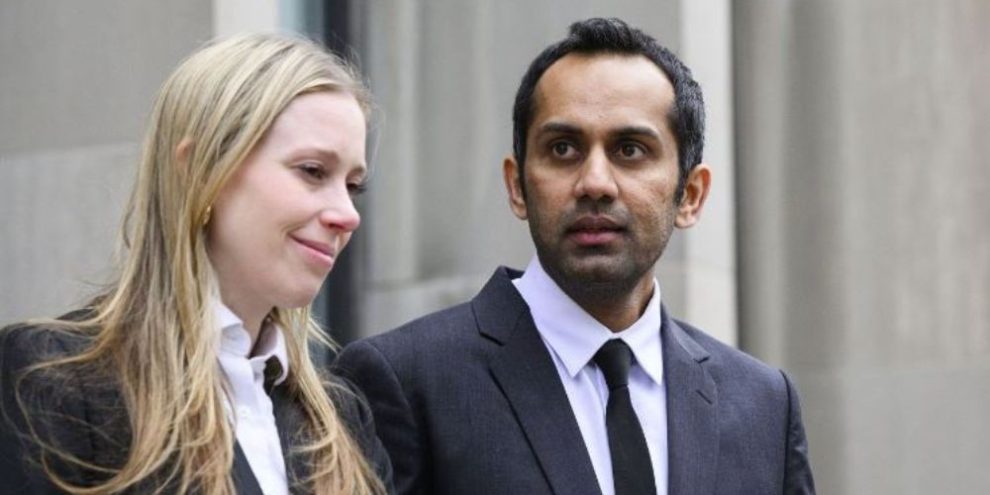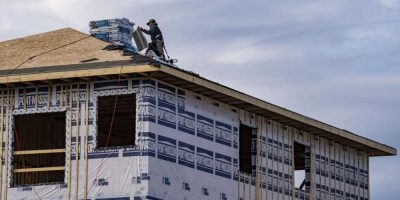
Legal observers are questioning the decision to charge and prosecute a man for murder in the death of a Toronto police officer when the evidence did not support it, saying the case raises concerns about fair process in the justice system.
Umar Zameer was found not guilty Sunday in the death of Det. Const. Jeffrey Northrup, who died on July 2, 2021, after he was hit by a vehicle in an underground parking garage at Toronto City Hall. Zameer had pleaded not guilty to first-degree murder.
Alison Craig, a defence lawyer based in Toronto, said that while it was likely not the sole decision of the trial prosecutors to pursue a murder charge, the case would "likely have proceeded very differently" had the deceased not been a police officer.
"I'm sure there was a whole lot of pressure in light of the fact that he was a police officer. It shouldn't have been treated any differently, I don't think, but I think it quite obviously was," she said. That raises concerns of a two-tier justice system, she said.
There should be an inquiry to investigate why the case was prosecuted as a murder when the evidence from the Crown's own expert contradicted that narrative, she said.
"The question has to be asked why Mr. Zameer was put through this for years, why the deceased officer's family was put through this for years," she said.
"Obviously it's tragic and horrendous for them to live through this, and if (Northrup's family) had been told the truth about what the evidence showed happened, they could have started grieving years ago."
After the verdict Sunday, Crown prosecutor Michael Cantlon issued a written statement, saying the events surrounding Northrup's death "warranted a trial to determine accountability."
The Crown has to believe there's a reasonable prospectof conviction before putting someone on trial, but "they might as well have conceded that they never went through that process of determining whether there was a reasonable prospect of conviction," said Reid Rusonik, a Toronto defence lawyer.
Rusonik said he was worried police couldn't "get past the notion that somebody has to pay for an officer losing his life," and chose to make it an antagonistic situation rather than a learning experience and a collective expression of grief.
"It could have literally happened to anyone. It's just a tragedy. It was an accident ... We could have all been in that underground parking garage that night, any one of us, and the exact same thing would have happened to us," he said.
Daniel Brown, a defence lawyer and former president of the Criminal Lawyers' Association, said no one disputes that deliberately killing a police officer should carry more significant consequences, "but this is a case where they're trying to squeeze a square peg into a round hole."
Prosecutors had the evidence for years and were aware of its limitations, he said.
"They're trying to turn something that isn't a murder into a murder,” he said.
Barrie's News Delivered To Your Inbox
By submitting this form, you are consenting to receive marketing emails from: Central Ontario Broadcasting, 431 Huronia Rd, Barrie, Ontario, CA, https://www.cobroadcasting.com. You can revoke your consent to receive emails at any time by using the SafeUnsubscribe® link, found at the bottom of every email. Emails are serviced by Constant Contact
The case appeared to be a "political prosecution," he added, noting several politicians – including Ontario Premier Doug Ford – publicly condemned Zameer before the case even went to trial.
"It created a false narrative about what happened in this case," Brown said. "The premier of Ontario was putting his thumb on the scales of justice and infecting the public's views about how they should view this man."
When Zameer was released on bail in the fall of 2021, Ford expressed his disapproval on X, formerly known as Twitter, calling the decision "completely unacceptable." He initially described Zameer as "the person responsible for this heinous crime," but later changed it to "the person charged."
Then-Toronto mayor John Tory and Brampton's mayor also denounced the decision.
At the time, the reasons for the ruling could not be publicly disclosed due to a publication ban, but the ban has lifted now that the trial is complete. In her decision, the bail judge found, among other things, that the Crown had a "weak" case for murder.
Ford's office did not immediately respond to a request for comment Monday. Ontario's attorney general's office also did not immediately respond to a request for comment.
Brown said the fact that the trial judge, Ontario Superior Court Justice Anne Molloy, apologized to Zameer after the jury delivered its verdict Sunday is "unusual" and significant.
"It’s highly rare and it felt that she was expressing the public’s collective feeling about this case," Brown said.
During trial, prosecutors alleged Zameer chose to drive dangerously even though Northrup and his partner – both plainclothes officers – were nearby, and intentionally ran down Northrup.
Defence lawyers argued Zameer didn't know they were police officers and feared his family was under attack from robbers or a gang. They argued Zameer had no reason to want to flee police, and tried to escape as safely as he could.
Zameer testified he looked back when reversing and to the front while driving forward, and did not see anything in the car's path.
Three officers who witnessed the incident testified Northrup was standing in the laneway of the garage with his hands outstretched when he was run over. But security footage showed Northrup was not standing in the laneway. Instead, an object believed to be his body appeared on the ground in the car's path at one point.
Two crash reconstruction experts, one of them called by the Crown, told the court they concluded Northrup fell after being side swiped by the car reversing, and was already on the ground when he was run over by the car moving forward. The expert called by the defence also testified Northrup would not have been visible on the ground because he was in the car's blind zone.
Prosecutors argued the witness officers were wrong about Northrup's location but correct that he was standing. They alleged the impact happened behind a pillar blocking the view of the camera.
Molloy told jurors before they began deliberating that it was her opinion there was no evidence to fully support the Crown's theory, but that the defence's theory aligned with the video, the experts, and the testimony of Zameer and his wife.
She also instructed jurors to consider the possibility of collusion between the witness officers, noting all three had the same incorrect memory of what happened.
This report by The Canadian Press was first published April 22, 2024





